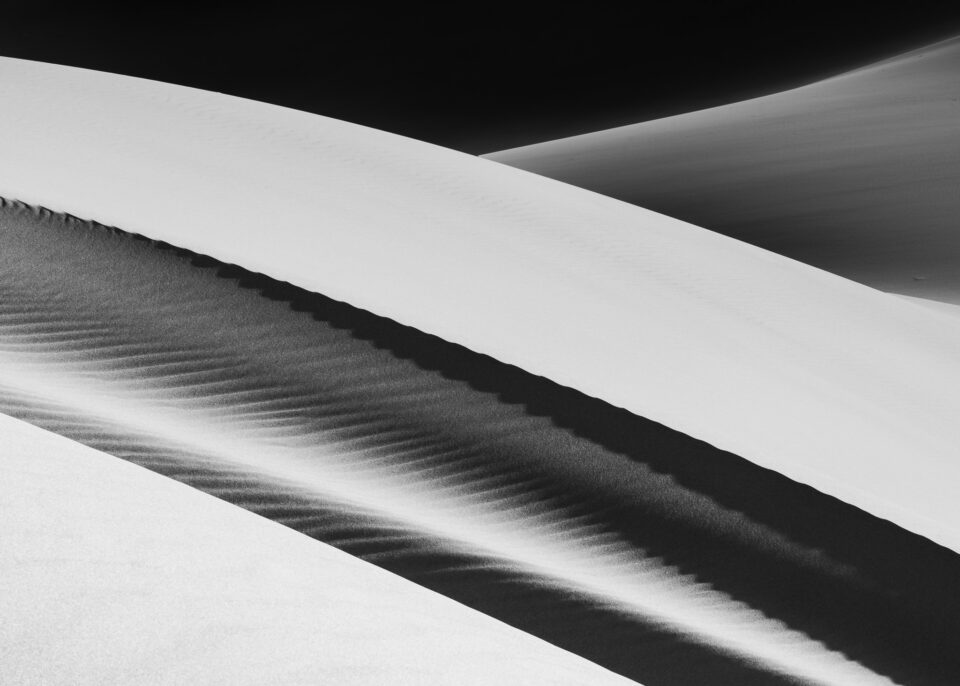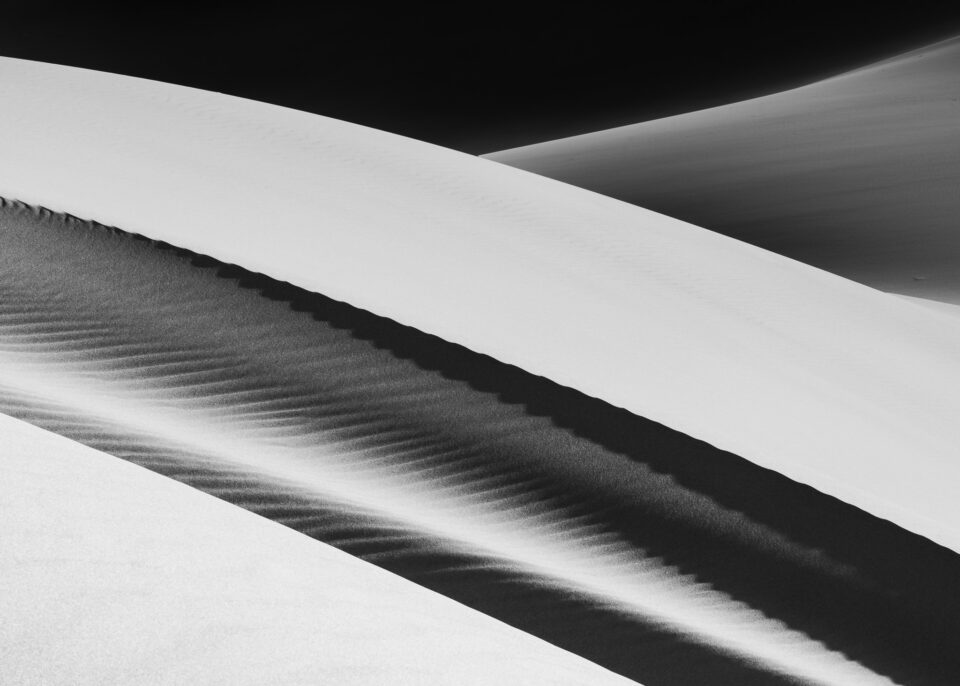كيف تم تصوير هذه الصورة١٠؟
How Was This Picture Made #10?
This is the tenth post in our “How Was This Picture Taken” series, and this one features a photograph I took at Great Sand Dunes National Park in Colorado. Since this is the tenth installment in our series, and because we have a number of exciting projects coming up, we’d like to do something a bit special this time:

Before getting to the questions, here is a bit of background information:
I took this image at sunrise. Strong winds had erased every footprint from the dunes, which left a pristine canvas for landscape photography. There weren’t any clouds, so I focused on abstract images of shadows and lines in the sand. This image was taken with my Nikon D800e and 70-200mm lens. I needed a tripod because the sun was still low in the sky, so the dunes were not yet particularly bright. I took the photo at ISO 100.
هذا هو المنشور العاشر في سلسلة "كيف تم التقاط هذه الصورة"، ويتضمن هذا المنشور صورة التقطتها في منتزه غريت ساند ديونز الوطني في كولورادو. نظرًا لأن هذه هي الدفعة العاشرة في سلسلتنا، ولأن لدينا عددًا من المشاريع المثيرة القادمة، نود أن نفعل شيئًا خاصًا بعض الشيء هذه المرة:

قبل الدخول في الأسئلة، إليك بعض المعلومات الأساسية:
لقد التقطت هذه الصورة عند شروق الشمس. لقد محت الرياح القوية كل أثر من الكثبان الرملية، مما ترك لوحة قماشية نقية لتصوير المناظر الطبيعية. لم تكن هناك أي غيوم، لذلك ركزت على الصور المجردة للظلال والخطوط في الرمال. تم التقاط هذه الصورة باستخدام كاميرا Nikon D800e وعدسة مقاس 70-200 مم. كنت بحاجة إلى حامل ثلاثي الأرجل لأن الشمس كانت لا تزال منخفضة في السماء، وبالتالي لم تكن الكثبان الرملية مشرقة بشكل خاص بعد. لقد التقطت الصورة عند ISO 100.
How Was This Picture Made #10?
This is the tenth post in our “How Was This Picture Taken” series, and this one features a photograph I took at Great Sand Dunes National Park in Colorado. Since this is the tenth installment in our series, and because we have a number of exciting projects coming up, we’d like to do something a bit special this time:

Before getting to the questions, here is a bit of background information:
I took this image at sunrise. Strong winds had erased every footprint from the dunes, which left a pristine canvas for landscape photography. There weren’t any clouds, so I focused on abstract images of shadows and lines in the sand. This image was taken with my Nikon D800e and 70-200mm lens. I needed a tripod because the sun was still low in the sky, so the dunes were not yet particularly bright. I took the photo at ISO 100.
هذا هو المنشور العاشر في سلسلة "كيف تم التقاط هذه الصورة"، ويتضمن هذا المنشور صورة التقطتها في منتزه غريت ساند ديونز الوطني في كولورادو. نظرًا لأن هذه هي الدفعة العاشرة في سلسلتنا، ولأن لدينا عددًا من المشاريع المثيرة القادمة، نود أن نفعل شيئًا خاصًا بعض الشيء هذه المرة:

قبل الدخول في الأسئلة، إليك بعض المعلومات الأساسية:
لقد التقطت هذه الصورة عند شروق الشمس. لقد محت الرياح القوية كل أثر من الكثبان الرملية، مما ترك لوحة قماشية نقية لتصوير المناظر الطبيعية. لم تكن هناك أي غيوم، لذلك ركزت على الصور المجردة للظلال والخطوط في الرمال. تم التقاط هذه الصورة باستخدام كاميرا Nikon D800e وعدسة مقاس 70-200 مم. كنت بحاجة إلى حامل ثلاثي الأرجل لأن الشمس كانت لا تزال منخفضة في السماء، وبالتالي لم تكن الكثبان الرملية مشرقة بشكل خاص بعد. لقد التقطت الصورة عند ISO 100.



تعليق